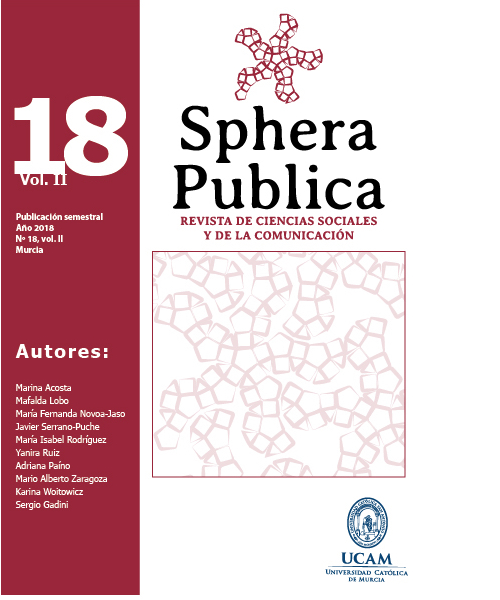Public spheres and appropriation of the social world. Habermas and Arendt common glances
Keywords:
Public space, public sphere, communicative actions, appropriation, Habermas, Arendt.Abstract
The concept of public spheres exist in the framework that both Jürgen Habermas and Hannah Arendt conceive in modern societies inside of the public space, so it is not surprising that in some academicals works, space and sphere are taken for synonyms despite constituting themselves as distinct categories. In that sense, the influence from Arendt's work has on Habermas's theory and on the power of his proposal for a meaningful world constructed through communicative and political actions in the public sphere is undeniable. In that sense, this text will address the appropriation of the social world through public spheres in a globalized context, in reference to technological changes that accelerate the perception that we live in an interconnected world, each day faster and supposedly better communicated, to show a critically eye of technology and privilege the social use that each person makes of her.References
Aristóteles. (1932). La política. París: Casa Editorial Garnier, Traducción de Nicolás Estévanez.
Arendt, H. (2005). La condición humana. Barcelona: Paidós.
Arendt, H. (2008). La promesa de la política. Barcelona: Paidós.
Berger, P. & Luckmann, T. (2005) La construcción social de la realidad. Buenos Aires: Amorrortu.
Cassirer, E. (1945) Antropología filosófica. México: FCE.
Castells, M. (2012). Redes de indignación y esperanza. Madrid: Alianza
Fraser, N. (1990). “Rethinking the Public Sphere: A Contribution to the Critique of Actually Existing Democracy”, en Social Text. Duke University Press: vol., 25/26. En: http://www.jstor.org/stable/466240
Habermas, J. (1981). Teoría de la acción comunicativa, Tomos I y II. Madrid: Taurus.
Habermas, J. (1986). Historia y crítica de la opinión pública. La transformación estructural de la vida pública. Barcelona: Gustavo Gili.
Habermas, J. (2008). Conciencia moral y acción comunicativa. Madrid: Trotta, 2008.
Habermas, J. (2009). Ay Europa!. Madrid: Trotta.
Harvey D. (2013). Ciudades rebeldes. España: Akal.
Mouffe, C. (1999). El retorno de lo político. Barcelona: Paidós.
Papacharissi, Z. (2010). A Private Sphere. Democracy in a Digital Age. Londres: Polity Press.
Rabotnikof, N. (2005). En busca de un lugar común: el espacio público en la teoría política contemporánea. México: UNAM-Instituto de Investigaciones Filosóficas.
Ramírez Kuri, P. (coord.). (2016) La reinvención del espacio público en la ciudad fragmentada, México, UNAM-IIS.
Rosa, H. (2011). “Aceleración social: consecuencias éticas y políticas de una sociedad de alta velocidad desincronizada” en Persona y sociedad, vol. XXV, núm. 1. Chile: Universidad Alberto Hurtado.
Schmitt, C. (1991). El concepto de lo político. Madrid: Alianza.
Sfez, L. (1995). Crítica a la comunicación. Buenos Aires: Amorrortu.
Weber, M. (2012). Economía y sociedad. México: FCE. decimoctava reimpresión.
Downloads
Published
How to Cite
Issue
Section
License
Los autores que publican en esta revista están de acuerdo con los siguientes términos:- Los autores conservan los derechos de autor y garantizan a la revista el derecho de ser la primera publicación del trabajo al igual que licenciado bajo una Creative Commons Attribution License que permite a otros compartir el trabajo con un reconocimiento de la autoría del trabajo y la publicación inicial en esta revista.
- Los autores pueden establecer por separado acuerdos adicionales para la distribución no exclusiva de la versión de la obra publicada en la revista (por ejemplo, situarlo en un repositorio institucional o publicarlo en un libro), con un reconocimiento de su publicación inicial en esta revista.
- Se permite y se anima a los autores a difundir sus trabajos electrónicamente (por ejemplo, en repositorios institucionales o en su propio sitio web) una vez publicado en la plataforma de Sphera Publica, ya que puede dar lugar a intercambios productivos, así como a una citación más temprana y mayor de los trabajos publicados








